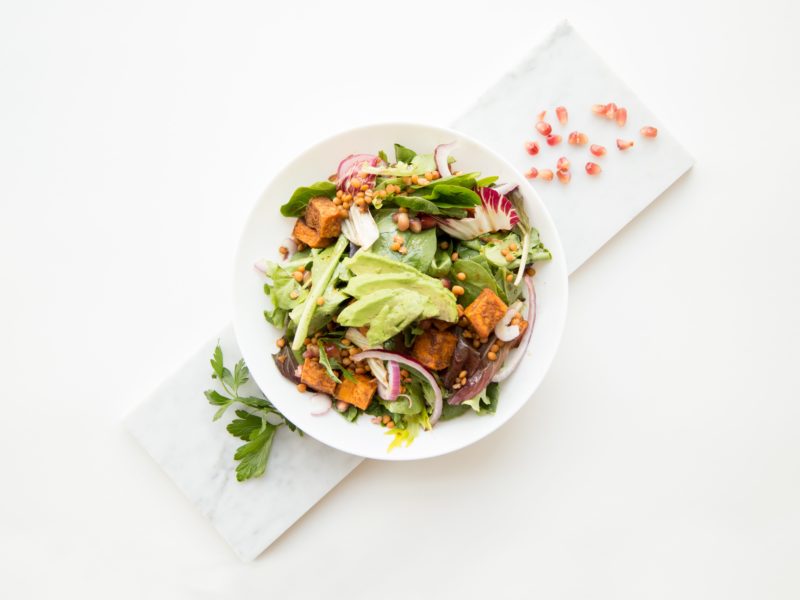So many diets, so little time….or are any of them worth your time? It’s no surprise so many people are confused about which diet is the best: Gluten-free, paleo, keto, low-fat, raw, vegetarian, vegan – it’s enough to make a person give up trying to sort through it all and just order a pizza.
When people ask me where to begin to reclaim their health, I have an answer much simpler than any diet plan: Eat real food, and only real food. Surprisingly, I believe this is almost all you need to know to completely makeover your health, especially if you are in an eating rut, rely on a lot of processed foods, or generally don’t think much about your food choices.
Here’s how to accomplish this simple yet transformative makeover in just five steps:
1. Throw out “food-like substances”
Author Michael Pollan first coined the term “food-like substances” to describe processed food, or food your great grandmother may not have recognized as food. You know what I’m talking about – I mean something so far from its natural form as a plant or an animal that it seems almost too futuristic to be food (because it is!). Go through your fridge and your pantry and sort through everything that
- Isn’t a plant, or doesn’t come from a plant
- Did not come from an organic farm.
The simple fact is that the food industry spends a lot of money on marketing food to you, but not a lot on producing quality, nutrient-dense, natural foods. The fresher the food, the better, so focus on fresh vegetables and fresh organic or free-range animal products and limit the amount of boxed and shelf-stable foods.
Also toss out foods that cause the most inflammation in your body, like those with added sugar or things that turn into sugar, like refined grains and flour products. Our culture is grain addicted, so this advice might cause you to break out in a cold sweat, but that’s just a sign of an unhealthy dependence and an even better reason to move on from these food-like substances!
2. Read labels
Generally, I prefer food without any label at all, but there are some real food choices that do have labels, so bring your reading glasses and look for these key terms:
Healthy fats: extra virgin coconut oil, full-fat grass-fed dairy products (especially raw or fermented), avocado oil, organic and pastured whole eggs, raw nuts and seeds, and extra virgin olive oil.
Organic produce: Conventional produce tends to be covered in pesticide residue and is also grown in soil that is largely depleted of nutrients. Organic vegetables and fruits are superior choices.
Clean protein: Chicken should be free-range/pastured, fish should be wild-caught, and beef should be grass-fed.
Stay around the periphery of the grocery store to find the most natural foods – the center of the supermarket is typically where you’ll find the boxed, canned, and bagged foods. If you do buy packaged food, look for things with just a few natural real-food ingredients you recognize and know your body will recognize too. If the label is a paragraph of unrecognizable or unpronounceable words, pass. Also, go local when possible, or visit a farmers’ market where you can find quality real food.
3. Create a working meal plan and rely on it
Once you’ve filled your kitchen with real foods, create a simple meal plan using a variety of the different foods you bought, so you never have to wonder what to eat (or make a last-minute bad decision). Simple homemade salads, soups, roasted veggies, and baked fish or meat make wholesome, nourishing meals without much effort. It’s also a good idea to try new things. Be adventurous – you might discover a new recipe or vegetable you love! Once you’ve made this meal plan and adjusted it to fit your taste and schedule, stick with it. Organizing your week of meals sets you up for a deliciously healthy week.
4. Leap into healthy
Forget about leaning in – how about going all in? When you make a commitment to a new way of living, you will see quicker results. That means going cold-turkey on the junk and processed food, but you don’t need that stuff anyway. At the same time, be patient and give yourself grace. Stress isn’t healthy either, so don’t stress out about being a perfect eater. No one is. When you eat something that isn’t healthy, learn from the experience and be aware of how it made you feel afterwards. This is how you cultivate a growing awareness of the effects of food on your body. It’s an integral part to building new habits.
I challenge you to do these five steps for five weeks, and journal your journey during this time. Each day, write down what you eat and how you feel during this process of creating health for yourself. Your health journal will further strengthen the organization, accountability, and presence that is already manifest as you proceed down the straight and narrow path towards optimal health and a more vigorous and vibrant.
5. Focus on nourishing yourself, not depriving yourself
Instead of focusing on all the foods you “can’t have,” focus on all the amazing, delicious, nourishing, health-building foods you can have. Then, eat consciously. Sit down and be present. Chew mindfully. As you eat, think about how every bite either creates health or tears it down. Enjoy eating because you know you’re giving every cell of your body a great gift: the nutrients it needs to be healthy and abundant. Eat as though your life depended on it….because it does. When you’re eating real, nutrient-dense foods, your body will begin to tell you when it’s full, so listen to your body’s messages.






No Comments